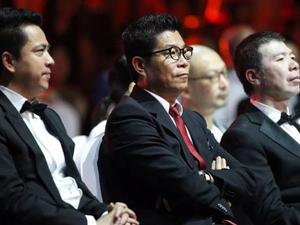
国际集装箱运输市场
07.
什么是国际集装箱运输?
国际集装箱运输是指以集装箱为单位,将托运人交运的货物从一国的某一地点运至另一国的某一地点的运输方式。国际集装箱运输由班轮公司按事先制定的船期表,在固定航线的固定挂靠港口之间,按规定的操作规则为非固定的广大货主提供集装箱货物运输服务。
08.
国际集装箱运输市场供给和
需求情况如何?
据克拉克森统计,2020年、2021年、2022年,全球集装箱运力供给分别为2368万TEU、2475万TEU和2563万TEU。需求方面,2022年国际集装箱运输量为20,300万TEU,相比2000年的6,562万TEU,增加了205%,年复合增长率为5.2%。
09.
出口集装箱运输包括哪些流程?
出口集装箱运输流程一般包括订舱、接受托运申请、发放/提取空箱、装箱、重箱进港、报关报检、装船、离港出运和换取提单等环节。
(1)订舱。托运人根据贸易合同或信用证条款的规定,在货物托运前一定时间内填好集装箱货物托运单(Container Booking Note),并委托货代或直接向班轮公司申请订舱。
(2)接受托运申请。班轮公司或其代理公司根据自己的运力、航线等具体情况以及托运人的需求,决定是否接受托运申请。
(3)发放/提取空箱。整箱货空箱通常由托运人或其代理凭借设备交接单到集装箱堆场领取,有的货主会自备集装箱。拼箱货空箱由集装箱货运站凭借设备交接单领取。此时完成提箱的托运人基本可以确认其有出运需求。
(4)装箱。整箱货由托运人在仓库或工厂自行装箱。拼箱货由托运人或其代理将不足一整箱的货物交至集装箱货运站,并由集装箱货运站负责装箱。
(5)重箱进港。在截港时间前,重箱由托运人或其代理、集装箱货运站送至集装箱堆场,等待装船出运。
(6)报关报检。货物装船出运前,托运人或其代理凭场站收据、出口许可证、商品检验证书等单证向海关申报,海关同意放行后在场站收据上加盖放行章。
(7)装船。集装箱装卸区根据装货情况,制订装船计划,并将出运的箱子调整到集装箱码头前方堆场,待船靠岸后,即可装船。
(8)离港出运。班轮公司在货物装船后,根据船期安排离港并驶向目的港。
(9)换取提单。班轮公司在集装箱船离港后两至三天,开始制作已装船提单。托运人或其代理凭场站收据正本向班轮公司或其代理换取正本提单,然后去银行办理结汇。
10.
集装箱运输有哪些箱型?
国际集装箱运输中常用的标准集装箱为20英尺集装箱(Twenty-feet Equivalent Units,TEU)、40英尺集装箱(Forty-feet Equivalent Units,FEU)和40英尺高箱。20英尺集装箱的长宽高分别是20英尺、8英尺和8英尺6英寸。40英尺集装箱的长宽高分别是40英尺、8英尺和8英尺6英寸。40英尺高箱的长宽高分别是 40英尺、 8英尺和 9英尺6英寸。除标准干货集装箱外,还有冷藏箱、罐式箱、框架箱、平板箱等特殊集装箱类型。
11.
什么是整箱货和拼箱货?
整箱货和拼箱货是常见的两种集装箱货物交接形态。整箱货指的是托运人自行将货物装满整个集装箱后,以箱为单位进行托运。拼箱货指的是承运人在单个托运人的货物数量不够装满整个集装箱时,将多个托运人的货物拼装在一个集装箱内进行托运。
12.
常见的集装箱货物交接方式有哪些?
常见的集装箱货物交接方式涉及三个概念,分别是集装箱堆场(Container Yard,CY)、集装箱货运站(Container Freight Station,CFS)和门(Door)。其中,集装箱堆场指的是集装箱重箱或空箱交接和堆存的场所;集装箱货运站等同于仓库,是处理和交接拼箱货的场所;门指的是托运人的工厂或仓库大门。集装箱货物共有九种交接方式,分别是场到场(CY to CY)、场到站(CY to CFS)、场到门(CY to Door)、门到门(Door to Door)、门到场(Door to CY)、门到站(Door to CFS)、站到门(CFS to Door)、站到场(CFS to CY)、站到站(CFS to CFS)。交接方式的选择与集装箱货物的交接形态有关。一般来说,班轮公司常用的交接方式为场对场,承接拼箱货的无船承运人常用的交接方式为站到站。
13.
国际集装箱运输市场有哪些参与者?
国际集装箱运输市场的主要参与者包括运输工具所有者、承运人、货运中间人和托运人等。
运输工具所有者为集装箱运输资产所有者,分为船东和箱公司两种类型。其中,船东拥有集装箱船的所有权,包括拥有集装箱船的班轮公司、一些大型金融机构和其他机构。
承运人是指本人或委托他人以本人名义与托运人订立海上货物运输合同的人,主要有班轮公司和无船承运人。
托运人主要是货主,可以是发货人也可以是收货人。
货运中间人是为承运人和托运人达成交易提供中间服务的人,例如订舱、报关报检等服务,主要有无船承运人、普通货代、船舶代理人、报关公司等。
14.
无船承运人与班轮公司有什么区别?
根据《中华人民共和国海商法》的规定,承运人是指“本人或者委托他人以本人名义与托运人订立海上货物运输合同的人”,主要有班轮公司和无船承运人。班轮公司通过自己拥有的集装箱船或者租借其他船东的集装箱船,为托运人提供国际集装箱运输服务。无船承运人以承运人身份接受托运人的货物,同时以托运人身份委托班轮公司完成国际集装箱运输。
15.
什么是基本港和非基本港?
在国际集装箱运输中,港口分为基本港和非基本港。基本港(Base Port)是班轮公司的船一般要定期挂靠的港口。基本港大多位于区域中心的较大口岸,港口设备条件比较好,货载多而稳定,运往基本港的货物一般为直达运输。非基本港(Non-Base Port)是指基本港以外的港口。
16.
国际集装箱运输市场有哪些重要港口?
2022年全球前十大集装箱港口依次是上海、新加坡、宁波舟山、深圳、青岛、广州、釜山、天津、中国香港、鹿特丹。中国有七个港口的吞吐量位居全球前十,集装箱吞吐量合计为1.98亿TEU,占前十大集装箱港口吞吐量的比例达到72.9%;其中,上海港以4730万TEU的吞吐量连续13年排名全球第一大集装箱港。
17.
国际集装箱运价有哪些价格构成?
国际集装箱普通箱运价通常由基本海运费和各种附加费构成,一般以美元为计价和结算货币。其中,基本海运费是指班轮公司针对每个计价单元(如1FEU或1TEU)的货物收取的、基于场对场交接方式的运费。附加费是班轮公司根据特定的运输条款、燃油价格、淡旺季、行业习惯等收取的附加费用,包括燃油附加费、币值附加费、旺季附加费、战争附加费、港口拥挤附加费、运河附加费、港口设施安全附加费、内陆转运费等。在国际集装箱运输市场,除普通箱海运运价外,托运人还要承担一系列以当地货币计价的费用,如码头操作费、文件费、报关费、装箱费、陆运费等。
18.
影响国际集装箱运价的主要因素
有哪些?
影响国际集装箱运价的主要因素有以下几个:
(1)供求关系。国际集装箱运输市场的供求关系是运价的决定因素。一般而言,班轮公司每个航次的预配率能实时反映该航次的供需状况,而出航后的装载率则会对班轮公司定价策略产生较大影响。
(2)成本因素。成本高低对运价水平有显著影响。集装箱运输成本主要包括船舶及集装箱固定投资、航次运行费用、管理费用及财务费用等。
(3)全球经济环境。国际集装箱运输需求是全球贸易的派生需求,全球集装箱运力增速和全球贸易量增速关系密切,国际集装箱运价水平也与全球经济环境密切相关。
(4)汇率因素。汇率波动会对班轮公司成本控制与盈利核算产生影响,从而影响运价水平。
(5)地缘政治。国际范围内已经发生或将要发生的、对全球贸易有影响的政策或重大事件会在短期内导致运价剧烈波动、甚至会影响运价长期走势。
(6)其他因素。国际集装箱运输货种多样化、运输链条长,其运价波动还受到诸多其他因素的影响,例如货物上下游产业链变化、天气、港口罢工、反垄断制度修订、长协价格谈判、联盟重组、竞争关系等。
International Container Shipping Market
07.
What is international container
shipping?
International container shipping is a mode of transport whereby the carrier delivers, through containers, the cargoes consigned by the shipper from one country to another. In international container shipping, liner companies provide non-specific customers with standardized container cargo transport services between fixed ports of call along fixed routes and in accordance with the pre-established sailing schedules and rules. The liners carry all types of products other than dry bulk cargoes, oil products, and special cargoes.
08.
What are the supply and demand
for international container
shipping Market?
According to Clarkson Research, the global container shipping capacity totaled 23.68 million TEU in 2020, 24.75 million TEU in 2021, and 25.63 million TEU in 2022. The international container shipping volume had reached 203 million TEU in 2022, up 205% from 65.62 million TEU in 2000, with a compound annual growth rate of 5.2%.
09.
What are the steps in international
export container shipping?
Export container shipping generally contains several steps: booking, acceptance of shipping order, dispatch/picking-up of empty containers, container stuffing, haulage of loaded container to port, customs declaration and inspection, loading, departure, and exchange for a bill of lading (B/L).
(1) Booking. The shipper is required to complete a “booking note” some time before the shipment in accordance with the terms of the trade agreement or letter of credit to book capacity through a freight forwarder or with a liner directly.
(2) Acceptance of shipping order. The liner or its agent decides whether to fulfill the shipping order based on its capacity, route, and other factors and the shipper’s needs.
(3) Dispatch/picking-up of empty containers. In FCL shipping, empty containers are usually picked up by the shipper or its agent at the container yard with an equipment interchange receipt (EIR), although some shippers also use their own containers. In LCL shipping, empty containers are picked up by a container freight station with EIR. The shipment needs become reasonably certain once the shipper picks up the empty containers.
(4) Stuffing. Under FCL, the shipper is responsible for loading goods into containers at its warehouse or factory. Under LCL, the shipper or its agent will deliver the goods that will not take up the entire space of a container to the container freight station for consolidation.
(5) Haulage of loaded container to port. The shipper, its agent, or the container freight station delivers the loaded containers to the container yard before its closing.
(6) Customs declaration and inspection. Before loading and shipment, the shipper or its agent needs to present the dock receipt, export license, and commodity inspection certificate to the customs. The dock receipt will be stamped with the clearance seal once the shipment is cleared.
(7) Loading. The container terminal prepares a stowage plan according to the cargo to be loaded and then moves the containers to the marshaling yard for loading once the ship is berthed.
(8) Departure. The ship is loaded with the cargo and will leave the port by the liner’s sailing schedule to the destination port.
(9) Exchange for a bill of lading. The liner will make a B/L for the loaded cargo after the container ship leaves the port for two to three days. The shipper or its agent should exchange its original copy of the dock receipt for the original B/L issued by the liner or its agent, and then complete currency exchange at a bank.
10.
What are the different types of
containers?
The standard containers commonly used in international shipping are Twenty-feet Equivalent Units (TEU), Forty-feet Equivalent Units (FEU), and Forty-feet High Cube (FHQ). TEU measures 20’ (L) × 8’ (W) × 8’6’’ (H), FEU measures 40’ (L) × 8’ (W) × 8’6’’ (H), and FHQ measures 40’ (L) × 8’ (W) × 9’6’’ (H). Complementing these standard dry goods containers are the various types of special containers such as reefer (e.g., refrigerated), tank, flat rack, and platform.
11.
What are full-container load (FCL)
and less-than-container load (LCL)?
FCL and LCL are two common modes of container shipping. FCL is the mode where the shipper fills the whole of a container for shipment as a single unit. LCL is the mode where the cargo of one shipper is consolidated with those of others in a single container because it is not enough to fill a whole container by itself.
12.
What are the common ways of
dropping off and receiving
container cargo?
Container Yard (CY), Container Freight Station (CFS) and Door are the three essential concepts in the delivery and receiving of container cargoes. A container yard is a designated storage area for handing over and storing loaded and empty containers. A container freight station, similar to a warehouse, is where cargoes are processed and consolidated into containers. A “door” is the door of the shipper’s factory or warehouse. Accordingly, there are nine combinations for cargo handover: CY/CY (CY to CY), CY/CFS, CY/Door, Door/Door, Door/CY, Door/CFS, CFS/Door, CFS/CY, and CFS/CFS. The specific choice depends on forms of the cargoes of container that are to be dropped off and received. Generally, liners use CY/CY, while NVOCCs that handle LCL shipments often use CFS/CFS.
13.
What are the participants of the
international container shipping
market?
Major participants include owners of means of transport, carriers, intermediaries, and shippers.
Owners of means of transport own container shipping assets and are broadly classified into shipowners and container companies. In particular, shipowners can be liner companies, large financial institutions, and other institutions that own container ships.
Carriers refer to the person by whom or in whose name a contract of carriage of goods by sea has been concluded with a shipper. Carriers mainly consist of liners and non-vessel operating common carriers (NVOCCs).
Most shippers are cargo owners who may be the consignors or the consignees.
Intermediaries provide intermediary services—space booking, customs declaration, and inspection declaration, for example—for carriers and shippers. The most common intermediaries are NVOCCs, common freight forwarders, shipping agents, and customs brokers.
14.
What are the differences between a
NVOCC and a liner company?
The Maritime Law of the People’s Republic of China defines a carrier as “the person by whom or in whose name a contract of carriage of goods by sea has been concluded with a shipper.” Carriers mainly include liner companies and NVOCCs. A liner offers international shipping services with leased or its own container ships. By contrast, a NVOCC, upon accepting goods from a shipper in the capacity of a carrier, consigns the goods as a shipper to a liner for shipping.
15.
What are Base Ports and
Non-Base Ports?
The ports in international container shipping are divided into Base Ports and Non-Base Ports. A Base Port is the port which liner companies generally call on with their vessels on a regular basis. Located within regional hubs such as Shanghai and Ningbo Zhoushan in China, most Base Ports are large and well equipped, enabling the shipment of a large and stable volume of cargoes. Generally, cargoes bound to Base Ports are shipped directly. Non-Base Ports are ports other than Base Ports.
16.
What are the major ports in the
international container
shipping market?
The world’s top ten container ports in 2022 were Shanghai, Singapore, Ningbo Zhoushan, Shenzhen, Qingdao, Guangzhou, Busan, Tianjin, Hong Kong (China), and Rotterdam, with Chinese ports taking seven of the top ten spots by throughput. The seven ports had a combined throughput of 198 million TEU, accounting for 72.9% of that of the top ten. Notably, the Shanghai Port, with a throughput of 47.3 million TEU, has been the largest container port in the world for 13 years in a row.
17.
What is the composition of the
international container
freight rate?
The freight rate has two major components—basic ocean freight and surcharges—and is commonly quoted and settled in U.S. dollars. Basic ocean freight is charged by liners for each pricing unit (such as 1 FEU or TEU) of cargo shipped under the CY/CY term. Surcharges are the additional fees charged by liners according to the specific terms of carriage, fuel prices, peak or off-peak seasons, industry practices, etc. Examples include bunker fuel surcharge, currency surcharge, peak season surcharge, war risk surcharge, congestion surcharge, canal surcharge, International Security Port Surcharge, and inland transshipment charges. In addition to the regular freight, international container shippers also need to bear a list of expenses quoted in their local currencies, such as terminal handling charges, documentation charges, telex release charges, customs declaration charges, container loading charges, and trucking charges.
18.
What are the major factors
influencing the international
container freight rate?
The major influencing factors of international container freight rate are:
(1) Supply and demand. The supply and demand of the international container shipping market is the determinant of the freight rate. In general, a liner’s shipping order ratio for a voyage is a real-time measure of the supply and demand situation for that voyage, while the loading ratio after the voyage starts has a large impact on the liner’s pricing strategy.
(2) Costs. The level of costs has a remarkable impact on the freight rate. The main components of container shipping costs are fixed investment in vessels and containers, voyage operation cost, administrative expenses, and financial expenses.
(3) Global economy. The demand for international container shipping arises from global trade. Growth in global container capacity and growth in global trade are closely related. The international container freight rate is also strongly linked to the global economic environment.
(4) Exchange rate. Exchange rate fluctuations can have an impact on the cost control and profit calculation of liner companies, thus affecting their freight rate.
(5) Geopolitics. Past or future policies or major events that had or will have an impact on the global trade can trigger a short-term swing in the freight rate and even affect the long-term price trend.
(6) Other factors. Due to the diversity of goods and a long transport chain, the international container freight rate is impacted by many other factors, such as changes in upstream or downstream industries, weather, port strikes, anti-monopoly amendments, price negotiations for long-term supply agreements, alliance restructuring, and competition.


VIP课程推荐
APP专享直播
热门推荐
收起
24小时滚动播报最新的财经资讯和视频,更多粉丝福利扫描二维码关注(sinafinance)











